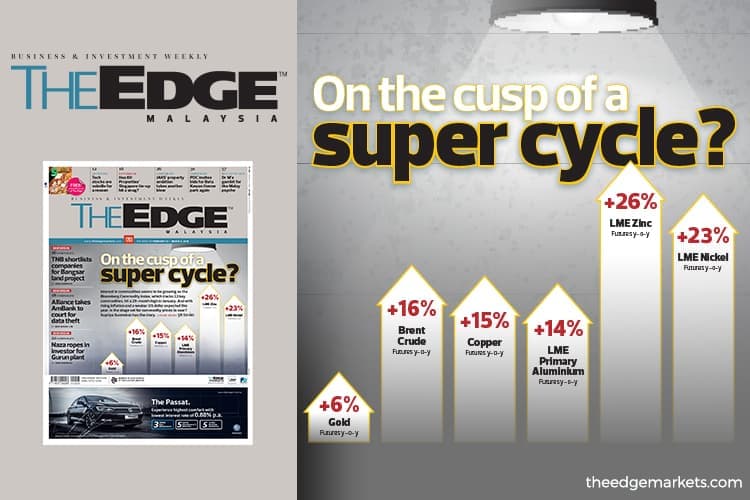
KUALA LUMPUR (Feb 24): The Edge weekly in its latest edition reported that investment guru Jim Rogers implied that commodities and equities have an inverse relationship when he said “commodities tend to zig when the equity market zags”.
In its cover story, the Edge’s Supriya Surendran wrote that the simple logic to that — from the manufacturers’ perspective at least — would be that higher commodity prices translate into higher input costs and thus lower profitability for a company, which tends to result in a loss of investor confidence and interest to invest in such firms altogether.
However, when there is impetus for growth in the economy, then commodities and equities could end up moving in the same direction, said the magazine.
The Edge highlighted that was exactly what happened on Jan 26, when the Dow Jones Industrial Average hit an all-time high of 26,616.71 points and the Bloomberg Commodity Index (BCOM) touched 90.79 points — its highest level since August 2015.
The BCOM tracks 22 commodities, including gold, crude oil, copper, corn, soybean, aluminium, nickel, zinc and wheat. Gold holds the highest weightage in the index at 12%, followed by natural gas (7.58%) and Brent crude oil (7.23%).
The weekly said that with the BCOM hitting its highest level in 29 months in January, coupled with the International Monetary Fund revising its global growth forecast to 3.9% from an earlier 3.7%, a question to ask is whether an uptick for commodities is in store.
Furthermore, it said rising inflation and a weaker US dollar — two factors prevalent this year — are positive for investments in commodities. These, coupled with volatility in stocks and higher interest rates ahead, have commodity bulls calling for a “commodity super cycle”.
The Edge said that Goldman Sachs is also reported to be at its most bullish on commodities since the end of the super cycle in 2008. In a report this month, the bank’s head of global commodity research, Jeffrey Currie, says the 3Rs — reflation, reconvergence of global growth and releveraging — will drive commodity prices higher.
According to Currie, most commodity prices reflated last year, supported by a weaker US dollar, supply controls and global growth. This allowed debt-laden producers to repay loans, clean up their balance sheets and releverage.
This led to emerging economies catching up — or reconverging — with developed ones, said the magazine.
For more on the commodity super cycle, read the Edge for week of Feb 26 – March 4 available at newsstands now.
Save by subscribing to us for your print and/or digital copy.
P/S: The Edge is also available on Apple's AppStore and Androids' Google Play.